
USS Vincennes (1826) was a 703-ton Boston-class sloop of war in the United States Navy from 1826 to 1865. During her service, Vincennes patrolled the Pacific, explored the Antarctic, and blockaded the Confederate Gulf coast in the Civil War. Named for the Revolutionary War Battle of Vincennes, she was the first U.S. warship to circumnavigate the globe.
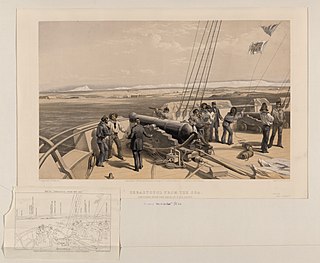
HMS Sidon was a first-class paddle frigate designed by Sir Charles Napier. Her name commemorated his attack on the port of Sidon in 1840 during the Syrian War. Her keel was laid down on 26 May 1845 at Deptford Dockyard, and she was launched on 26 May 1846. She had a fairly short career for a warship, but it included the rescue of the crew of the sinking Peninsular & Oriental Steam Navigation vessel Ariel on 28 May 1848, and a trip up the Nile that same year, when her passengers included the explorer and botanist Joseph Dalton Hooker. She served in the Black Sea during the Crimean War, 1854–55 under the command of Captain George Goldsmith. In April 1854, in company with HMS Firebrand, she blockaded the coast from Kavarna to the mouths of the River Danube. In September, during the actual Allied invasion of the Crimea, she was assigned to escorting the French troop transports, and assisted the French line-of-battleship Algiers, which had gone aground in Eupatoria Bay. She was then sent to monitor Russian movements around Odessa, and on 4 October attacked a marching column of 12,000 men on their way to the Crimea. On this occasion Russian rocket hit her funnel.
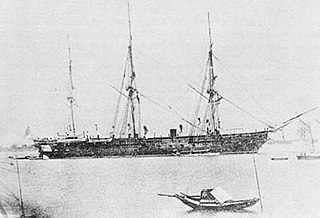
The first USS Colorado, a 3,400-long-ton (3,500 t), three-masted steam screw frigate, was launched on 19 June 1856, by the Norfolk Navy Yard. Named after the Colorado River, she was sponsored by Ms. N. S. Dornin, and commissioned on 13 March 1858, with Captain W. H. Gardner, in command. She was the fifth of the "Franklin-class" frigates, which were all named after US rivers, except for Franklin.

The first USS Pawnee was a sloop-of-war in the United States Navy during the American Civil War. She was named for the Pawnee Indian tribe.

HMS Sepoy was a 4-gun Albacore-class gunboat of the Royal Navy launched in 1856 and broken up in 1868.
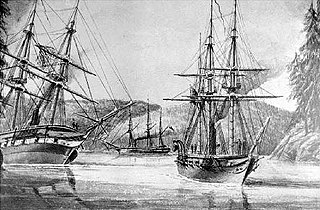
HMS Plumper was an 8-gun wooden screw sloop of the Royal Navy, the fifth and last ship to bear the name. Launched in 1848, she served three commissions, firstly on the West Indies and North American Station, then on the West Africa Station and finally in the Pacific Station. It was during her last commission as a survey ship that she left her most enduring legacy; in charting the west coast of British Columbia she left her name and those of her ship's company scattered across the charts of the region. She paid off for the last time in 1861 and was finally sold for breaking up in 1865.
Edwin T. Woodward, was a naval officer during and after the American Civil War.

HMS Hydra was the lead ship of her class of wooden steam paddle sloops of the British Royal Navy, launched in 1838 at Chatham Dockyard. After taking part in operations during Syrian War in 1840, she then served on anti-slavery operations and also as a survey vessel. She was scrapped in 1870.
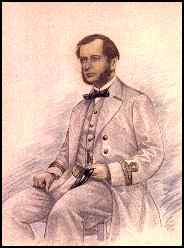
Commander George Truman Morrell RN was a British naval, officer and explorer active during the Victorian era.

USS Perry (1843) was a brig commissioned by the United States Navy prior to the American Civil War. She was tasked by the Navy for various missions, including those related to diplomatic tensions with Paraguay, the Mexican–American War, the slave trade, and the American Civil War. She was probably named after Commodore Oliver Hazard Perry.
USC&GS Arago was a survey ship that served in the United States Coast Survey from 1854 to 1878 and in the United States Coast and Geodetic Survey from 1878 to 1881. From October 1861 into 1863 Arago was at times attached to the Navy's South Atlantic Blockading Squadron off South Carolina to provide hydrographic support. She was the first ship of the Coast Survey or Coast and Geodetic Survey to bear the name.

HMS Daedalus was a 32-gun fifth rate frigate of the Royal Navy, launched in 1780 from the yards of John Fisher, of Liverpool. She went on to serve in the American War of Independence, as well as the French Revolutionary and Napoleonic Wars.

HMS Iris was a 26-gun sixth-rate frigate launched on 14 July 1840 from Devonport Dockyard. She spent some time with the West Africa Squadron suppressing the slave trade and later with the East Indies Station was involved in operations in Borneo. Iris was the first flagship of the Australia Station between 1859 and 1861 during which time she participated in the First Taranaki War. In 1864 she was extensively modified to allow her to ferry transatlantic telegraph cable to the cable-laying ship Great Eastern. She was decommissioned and sold off in 1869.
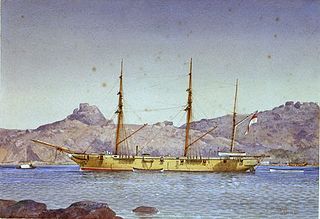
HMS Cordelia was an 11-gun Racer-class sloop of the Royal Navy launched in 1856 and sold in 1870.

HMS Eclipse was a 4-gun Cormorant-class first class gunvessel launched in 1860 from the shipyard of J. Scott Russell & Co., Millwall. She served on the Australia Station, took part in the Second Taranaki War, including contributing men to a naval brigade which attacked the Maori stronghold at Gate Pā. The entire class were never satisfactory as gunvessels, partly due to their excessive draught, and Eclipse was broken up at Sheerness in 1867, only 7 years after her launch.

HMS Falcon was a 17-gun Royal Navy Cruizer-class sloop launched in 1854. She served in the Baltic Sea during the Crimean War and then in North America, West Africa and Australia. She was sold for breaking in 1869.

HMS Hecate was a 4-gun Hydra-class paddle sloop launched on 30 March 1839 from the Chatham Dockyard.
HMS North Star was a 28-gun Atholl-class sixth-rate post ship built to an 1817 design by the Surveyors of the Navy. She was launched in 1824. North Star Bay, a bay in Greenland, was named in honour of this ship.
HMS Adonis was the name vessel of her class of schooners of the Royal Navy during the Napoleonic War. She was built at Bermuda using Bermudan cedar and completed in 1806. She had a relatively uneventful career, primarily on the Newfoundland station, before the Admiralty sold her in 1814. She then became the mercantile Adonis and sailed to Africa and the Indian Ocean until she was wrecked in June 1835 on the Maldive Islands.
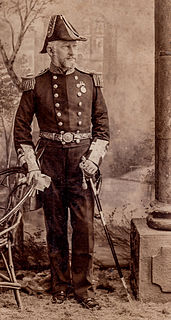
Vice-Admiral Sir Charles George Frederick Knowles, 4th Baronet was an officer of the Royal Navy, who saw service during the Second Burmese War and in command on the Niger expedition and quelling uprising at Santa Cruz, eventually rising to the rank of vice-admiral.















